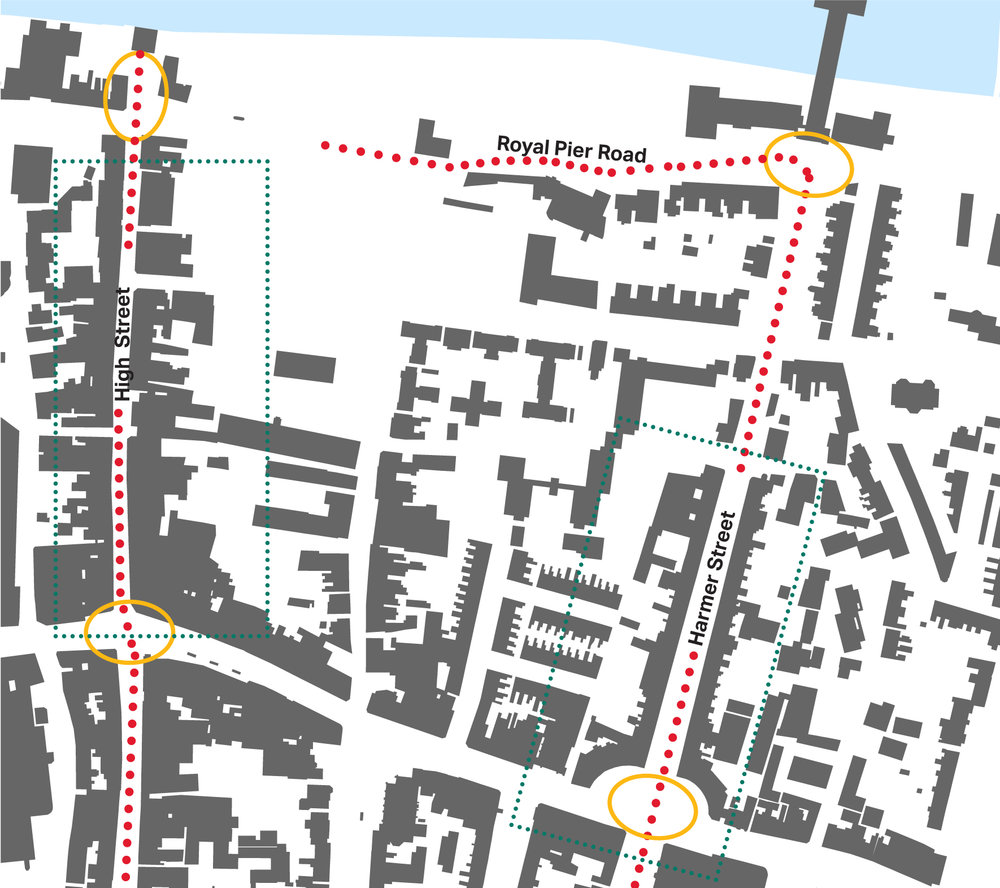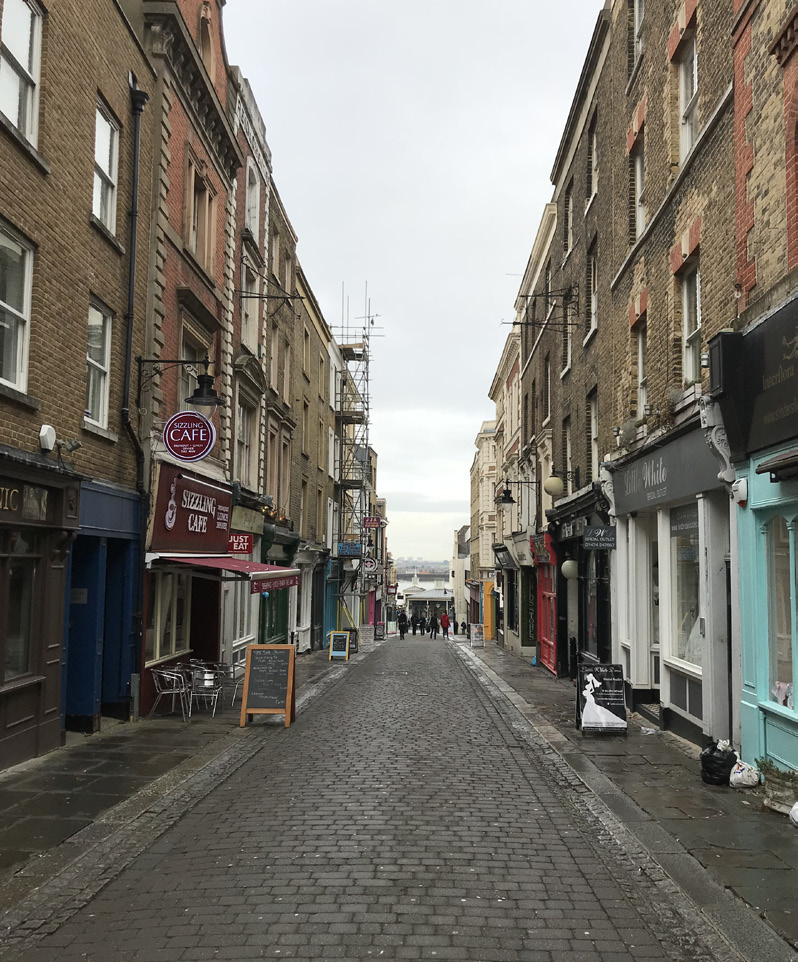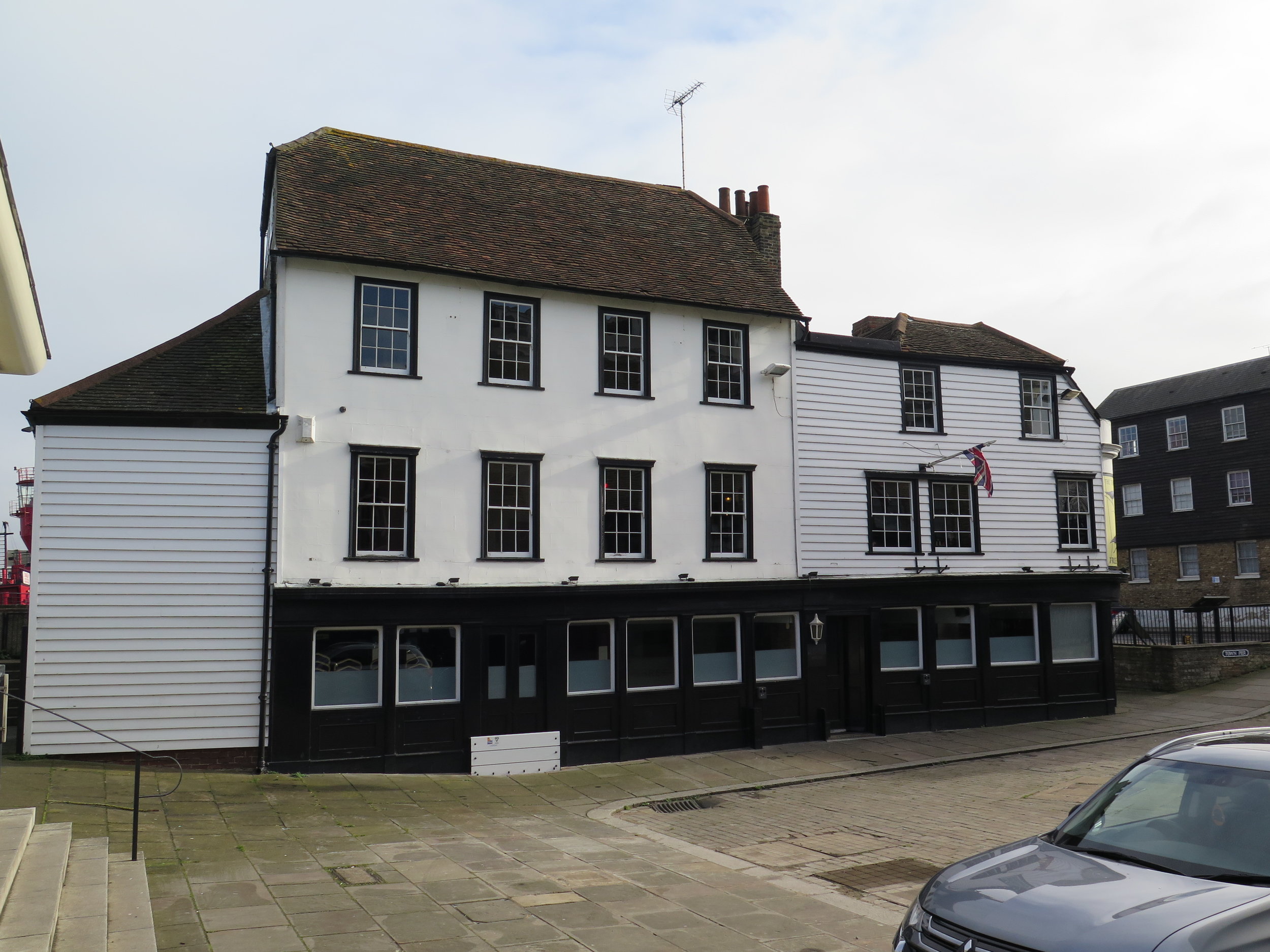
Learning from defined settlements:
Gravesend, historic town of fine grain streets
Gravesend lies immediately to the north of Watling Street. Its geographical situation has given Gravesend strategic importance throughout the maritime and communications history of South East England.
The location of Gravesend is at a point where the lowest slope of the North Downs reaches the river bank. To the east are the low-lying Shorne Marshes; to the west, beyond Northfleet, the Swanscombe Marshes. The settlement established because it was a good landing place and sheltered by the prominent height of Windmill Hill. The Domesday Book recorded mills, hithes, and fisheries here.
Gravesend 1860 © Crown copyright and Landmark Information Group Limited 2018. All rights reserved.
Through observations of the morphology of this historic waterfront settlement, what is particularly noticeable is the orthogonal form of the original town. Historic maps of Gravesend (above), show a strong defined ‘square’ of development on the river frontage, bounded by Darnley Road to the west, Wellington Street and Milton Lane to the east and Trafalgar Road to the south.
The streets within this orthogonal built form, are fine grained. The pedestrianised high street is 3-4 storeys high with a width of around 7m with close grain shop fronts with apartments above providing a sense of enclosure and encouraging community engagement. Harman Street in contrast is more formal with uniform frontages, a clock tower and is slightly wider at around 13m. Both streets end with a pier.
Formal designs for Gravesend show the plans for the town to be laid out in a Georgian style, with a grad pier terminating the town's main axis.
The High Street in Gravesend
Northern end of High Street, looking onto the Pier in Gravesend Town Centre
Harmer Street - with continuous painted articulation line giving a strong horizontal expression to the street
High Street - horizontal boarding
High Street - 3 storeys plus attic storey - mixed used ground level
Alley way from the High Street
Commercial Place - gable and bay profile
Black plinth
Red brick and pale bath stone
Warehouse - storeys high-lighted with continuous stone articulation













